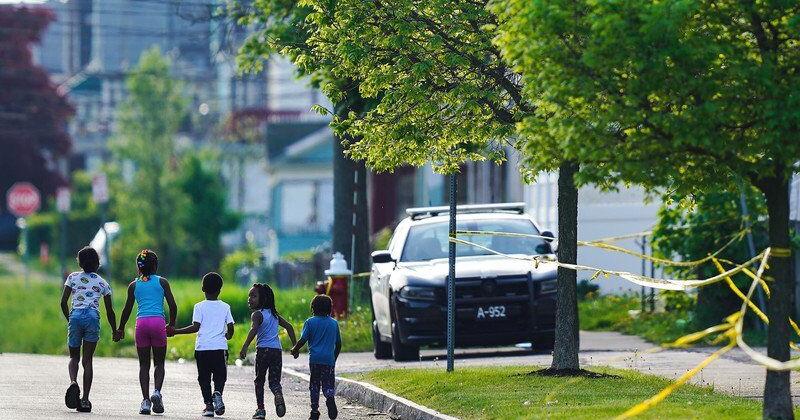School counselors cry for help after Buffalo shooting | Local News
Every school, it seems, has a moment that crystallizes the crisis facing American youth and the strain it places on educators.
For a rural California high school counselor, it happened this year after a suicide prevention seminar, when 200 students showed up saying they needed help. Many were sixth graders.
Another Massachusetts school counselor tells the story of a high school student who spent two weeks in a hospital emergency room before he was able to get an inpatient bed in a psychiatric unit.
For many schools, last weekend’s shooting in Buffalo, perpetrated by an 18-year-old who was flagged for making a threatening comment at his high school last year, prompted staff to discuss how they might react differently.
Robert Bardwell, school board principal at Tantasqua Regional High School in Fiskdale, Massachusetts, said the shooting in upstate New York shaped how he handled a threat assessment this week. He told staff: ‘Point our i’s, cross our t’s because I don’t want to be on the news in a year or five years, saying the school hasn’t done something we should have to prevent this .”
An increase in student mental health needs, combined with staffing shortages and widespread episodes of misbehavior and violence, has strained school counselors and psychologists. The Buffalo shooting highlights their concerns about their ability to support students and adequately screen those who may show potential for violence.
When accused Buffalo shooter Payton Gendron was asked in the spring of 2021 by a teacher at his Binghamton high school about his plans after graduation, he replied that he wanted to commit murder-suicide, according to the police. The comment prompted a state police call and a mental health evaluation at a hospital, where he claimed he was joking and was allowed to attend his graduation.
“I understand that schools are always safe. And I believe it,” said Bardwell, who is also executive director of the Massachusetts School Counselors Association. “But we also have the impression that there are more and more children who have difficulties. And some of those struggling kids might be doing bad things.
Childhood depression and anxiety were on the rise for years before the pandemic, and school closures and wider social lockdowns during the pandemic exacerbated the problems, experts say. The return to in-person classes has been accompanied by a growing number of school shootings, experts say, who say clashes are ending in gunfire as more students bring guns to school. ‘school. Teachers say disrespect and mistrust have increased. Tempers are shorter and flare up faster.
“The slogan I would go with is that the kids are not well,” said Erich Merkle, a psychologist for public schools in Akron, Ohio, a district of about 21,000 students who he says makes facing an increase in depression, anxiety and suicidal tendencies among students. and substance use, as well as aggression and violence, among other behavioral issues. “I can tell you that therapists are struggling.”
Many parents had hoped that with the reopening of classrooms, the problems with distance learning would fade away. But it quickly became clear that the prolonged isolation and immersion in screens and social media had lasting effects. Schools have become a stage where the ripple effects of the pandemic are playing out.
School staff are ‘100% taxed,’ said Jennifer Correnti, school board superintendent at Harrison High School in New Jersey, where counselors have been strained as they help students acclimate after two school years of pandemic learning disruptions. “Everyone. Administrators, staff. Like, there’s no one escaping. There’s no one leaving school feeling amazed every day.
Suicide risk ratings, in particular, are on the rise. The 15-year-old counselor says she has done as much in the past three years as she has in the previous 12 years.
She and Merkle both said they used mass shootings like the one in Buffalo, and another in which a 15-year-old shot four classmates in Michigan, to discuss how they would have reacted .
At Livingston Middle School in rural central California, counselors have been teaching suicide prevention lessons in classrooms for years. Before the pandemic, classes would have resulted in about 30 students saying they wanted to see a counselor, said Alma Lopez, district counselor coordinator and one of the middle school’s two counselors.
“This year I had 200 children, a quarter of our student body,” she said. “It’s such a huge number. I can’t see 200 children every week. It’s just impossible.
Most of the children seeking help were sixth-graders with problems related to friendships, she said.
Quickly, school staff made changes, holding as many one-on-one sessions as possible, offering more group mental health classes, and putting flyers in each class with the mental health helpline number. suicide prevention.
They brought back as many activities, clubs and assemblies as possible to help kids connect. And Lopez said she constantly reminds her district that more support is needed, a plea echoed by her peers nationwide.


Comments are closed.